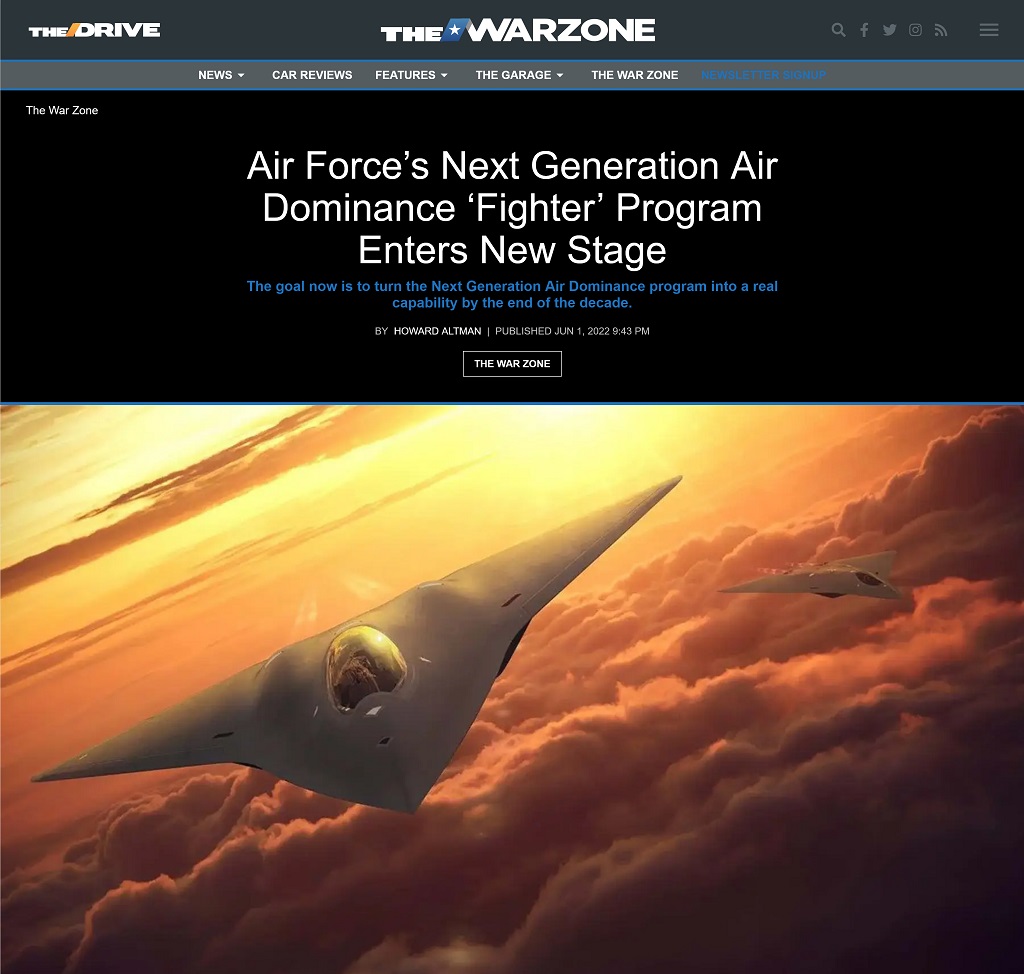The goal now is to turn the Next Generation Air Dominance program into a real capability by the end of the decade.
The Air Force’s Next Generation Air Dominance (NGAD) program — which includes a new manned fighter-like platform, associated collaborative drones, weapons, sensors, and communications architecture — has started its engineering, manufacturing, and development (EMD) program, Air Force Secretary Frank Kendall announced Wednesday. The goal, he said, is to turn NGAD into a real capability before 2030.
“We have now started on the EMD program to do the development aircraft that we will take into production,” Kendall said during a Heritage Foundation talk Wednesday afternoon.
The clock on that 6th-generation fighter program and its many other facets, he said, “is starting roughly now. We think we’ll have the capability by the end of the decade.”
The Air Force had previously worked on “an experimental prototype” of the aircraft, said Kendall. “So we basically had an X-plane program, which was designed to reduce the risk in some of the key technologies that we would need for a production program.”
Photo 1: Northrop Grumman rendering of a notional next-generation manned tactical aircraft equipped with a laser.
The Air Force needs to speed up its processes, Kendall said, adding that he’s “not interested in demoing experiments unless they are a necessary step on the road to a new capability.”
The Air Force, he said, tends to “do a quick demo and then we have to start an EMD or development program and wait several more years because we didn’t start the development function.”
But unless there is a need to reduce risk, Kendall said, “we should go right to development for production and get there as quickly as we can.”
The Presidential Fiscal Year 2023 defense budget request includes $1.7 billion for the NGAD program. Last month, according to Breaking Defense, Kendall told lawmakers that the NGAD manned platform would cost “multiple hundreds of millions of dollars” per plane as it would be the centerpiece of the NGAD ecosystem.
It is unclear if a prime contractor has been picked to develop the manned portion of the program or an even larger segment of it. At the same time, it isn’t perfectly clear if there would be a single prime contractor on any one platform in the NGAD program as this is something the USAF is trying to migrate away from, at least to a degree. NGAD is not a fighter program in the traditional sense, either, so it is hard to project the current status of it, including winners and losers in terms of contractors. Of course, Lockheed, Boeing, and Northrop Grumman are all possible candidates regardless of how the EMD stage is configured and some decisions would have likely been made as to who will do what in order to begin EMD.
As noted early, NGAD is a broad initiative with a goal to create a ‘system of systems’ that will ensure U.S. tactical air dominance for the decades to come.
It includes a highly adaptable and optionally manned platform that possesses substantial range, enhanced survivability, and next-generation modular sensor capabilities.
We have a full report that goes into much more detail about that and how the F-22 is being used to help develop NGAD here.
The NGAD program “is not just about the platform, but what we call the family of systems,” he said. “Part of that family of systems is going to be uncrewed combat aircraft.”
Kendall said to think of it as a combination of a piloted aircraft flying with four or five uncrewed ones that are controlled by the pilot “and used together as an operational formation.”
The first contracts, he said, were put out around 2015 for the experimental ‘X-plane’ phase.
The Air Force, he said, “is going to go in that direction. There is a lot of evidence out there that this can be done.”
He pointed to other efforts like the Defense Advanced Research Project Agency’s (DARPA) Air Combat Evolution (ACE) project and Australia’s Airpower Teaming System ‘loyal wingman’ drone program as examples of how linking piloted and uncrewed combat aircraft can work.
Kendall has previously named Australia’s loyal wingman program, which is technically called the Airpower Teaming System (ATS), as being among the potential “feeders” into related US programs to provide unmanned partners for fighters and bombers.
Two years ago, Will Roper, at the time Assistant Secretary of the Air Force for Acquisition, Technology, and Logistics, revealed that a previous undisclosed demonstrator for the Next Generation Air Dominance (NGAD) program had already begun flight testing.
“We’ve already built and flown a full-scale flight demonstrator in the real world,” Roper told Defense News, “and we broke records in doing it. We are ready to go and build the next-generation aircraft in a way that has never happened before.”
So while the first flight of the production-representative NGAD fighter is still years away, at least now we know it has entered into the critical development phase. Considering the Air Force’s force structure plans for the coming half-decade or so, a lot seems to be riding on NGAD going from prototype to operational hardware sitting on the ramp sooner than not.
Contact the author: howard@thewarzone.com


